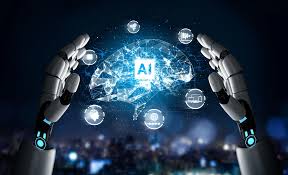Artificial Intelligence (AI) is transforming the world in powerful and innovative ways. It is no longer just a futuristic concept but a technology that impacts almost every part of daily life. AI uses smart algorithms and machine learning to analyze data, make decisions, and perform tasks that once required human intelligence. From voice assistants to self-driving cars, AI is making complex work easier and faster.
In healthcare, AI helps doctors detect diseases earlier, predict patient outcomes, and create personalized treatment plans. In business, companies use AI to understand customers better, automate routine tasks, and improve services. AI chatbots and virtual assistants make customer support faster and more efficient. In education, AI-powered tools give students personalized learning experiences, helping them study in smarter and more effective ways.
AI also plays a big role in industries like transportation, agriculture, and finance. It helps in predicting traffic, improving crop yields, detecting fraud, and making data-driven decisions. These innovations not only save time but also reduce human error, leading to more accurate results.
However, the rise of AI also brings challenges. It raises questions about privacy, job security, and ethical use. That’s why responsible development and use of AI are important. Governments, businesses, and individuals must work together to create balance between innovation and human values.
Overall, AI is a game-changer that continues to shape the modern world. As it grows smarter, it will open new doors for creativity, efficiency, and progress in almost every field of life.







Share This News